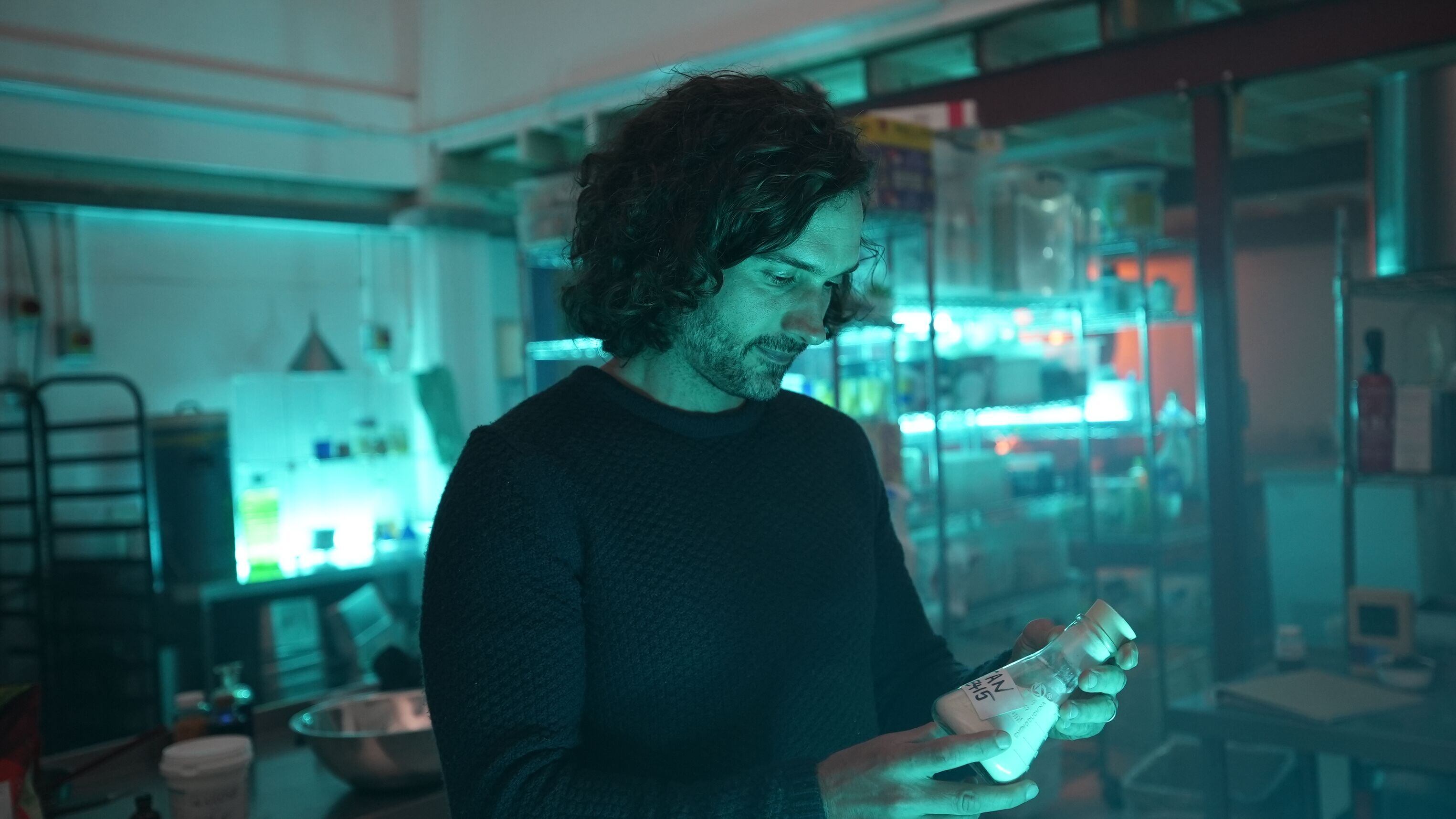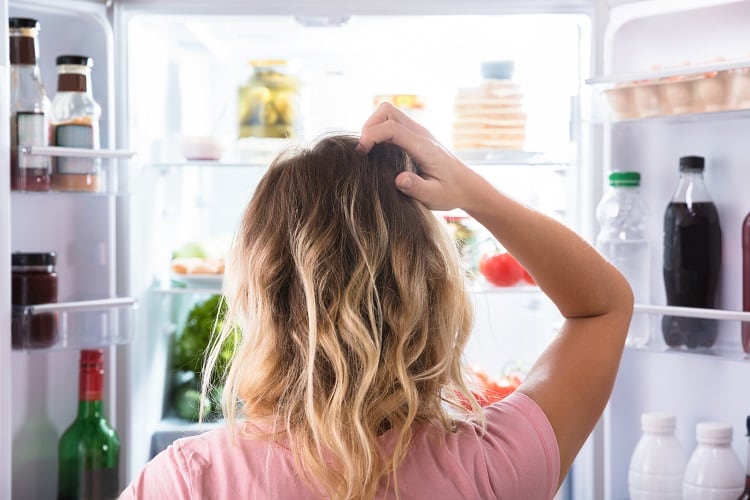Joe Wicks, also known as “The Body Coach,” is a British fitness trainer and influencer who rose to fame during the pandemic through his online HIIT workouts.
He recently came under scrutiny for his sugar-free challenge that involved, among other things, cutting out fruit consumption. Now, he’s lifting more eyebrows after launching a satirical protein bar named ‘Killer’ in advance of a TV documentary, Joe Wicks: Licensed to Kill, which will air in the UK on Monday, Oct. 6.
The stunt has drawn attention and praise from the mainstream media and whole-food advocates but triggered critical commentary from some in the nutrition industry who say it is misguided and employs fear-mongering tactics that could drive consumers away from making healthier decisions.
Creating a killer bar
The documentary will follow Wicks as he teams up with Dr. Chris van Tulleken, author of the book Ultra Processed People, to create the “UK’s most dangerous health bar” to reveal the risks of UPFs.
“The documentary is all about uncovering the harmful effects a diet high in ultra-processed food is having on our health and to pressure the government and the food companies to make some changes,” Wicks wrote in his LinkedIn post announcing the project.
The Killer Bar has been designed to provide 206 kcal of energy. It contains 6.1 g of fat, including 3.0 g of saturated fat, and 22.0 g of carbohydrates, with 6.9 g of sugars. It also contains 19.0 g of protein, 4.5 g of fiber, and 0.10 g of salt per portion.
The ingredient list is deliberately lengthy, containing 27 vitamins & minerals which validate over 200 health claims. These include vitamins C, D, E, K, A and B, iron, zinc, selenium, magnesium, manganese, copper, chromium, biotin and folate, as well as antioxidant extracts like green tea, grape seed, lutein, lycopene, quercetin and CoQ10.
It also includes palm oils, maltitol, xylitol, aspartame, sucralose, hydrolyzed whey and soy proteins, polydextrose, maltodextrin, emulsifiers, stabilizers and preservatives.
“This chocolate-orange flavored protein bar is bursting with flavor," the Killer bar website reads. “However, excessive consumption may increase your risk of cancer, stroke and early death.”

Nuance in nutrition
According to Nick Morgan, managing director of the nutrition market data analyst company Nutrition Integrated, many of the ingredients included are science-backed and nutritionally important, citing the use of hydrolyzed whey protein in infant nutrition.
“To some extent, you have to ask what Wicks is trying to achieve,” Morgan said. “He’s pointing out that there are a lot of ingredients, but many of them are used for very important purposes. In that sense, it’s a broad-brush criticism. There is a point to be made, but it overlooks many important aspects of how these products, especially healthier ones, are developed.”
Morgan noted that the website is designed to be deliberately goading and provocative, referencing the misleading imagery used that suggests a ‘before and after’ of consuming the protein bar.
“He’s framing misinformation with more misinformation, which is ironic and, of course, disappointing,” Morgan said. “There are just aspects you wish had been handled differently, but the problem is, is Channel 4 interested if he takes the more balanced approach?”
Furthermore, Morgan explained the stunt only highlighted Wicks’ “lack of understanding of our industry.”
“While he frames the regulations, he ignores how they affect the industry’s public image,” he said. “He focuses on criticizing the rules, which do have limits, but he overlooks the crucial role our industry plays in creating products that can improve people’s health.”
Targeting the UK Government
The bar is available to buy via the website, but Wicks advises the public not to eat it, as he explains its sale is only to spotlight issues with food regulations and push authorities to tighten food laws.
“The bar is for sale—it’s not to be eaten, it’s a vehicle for a campaign to get the Government to change and put legislation in place to help us eat better and give us real, honest, transparent truthful information about the foods we are eating,” Wicks said in an Instagram video.
He is urging the UK Government to introduce front-of-pack warning labels in order to enable consumers to make fully informed choices about their food. He cited countries across South America, including Argentina, Colombia, Chile, Mexico, Peru, Uruguay and Venezuela, that already took steps in this direction.
These countries have adopted mandatory black, octagonal “high in” warning labels on the front of packaged foods that alert consumers when a product exceeds certain thresholds for calories, sugar, salt or saturated fat.
This end goal, however, caused a stir with some equally high-profile personalities, such as fitness influencer and nutrition brand founder James Smith who is speaking out publicly against Wicks.
In his YouTube video rebuttal titled ‘Joe Wicks Chatting Sh*t AGAIN’, Smith suggested that Wicks’ campaign to pressure the government into changing food labeling laws is misplaced, especially when more pressing issues and practical solutions like exercise and basic nutrition education should be the focus.
Legal implications
According to Dr. Mark Tallon, managing partner at Food Law firm, Legal Foods, ironically the product itself may not fully comply with UK food laws.
“While this stunt may at heart have good intentions, there is a lack of science and lack of legal understanding over placing such a product on the market,” Dr. Tallon told NI.
“If you are going to argue the weakness and limitations of the UK legal system by saying your product is legal then this should be a priority.”
He explained that the product packaging highlights several legal issues which are further exacerbated by the lack of information available online to the public. However, it is the disputed claims about UPFs and the suggestion that the Killer Bar may cause cancer that are of significant concern.
“Under UK and EU law Article 14 of the General Food law, regulations only permit foods to be sold if they are safe and not injurious to health,” he said. “As such if this bar would cause cancer or stroke then its sale would be illegal.”
Stunt product or not, as it is freely available for sale and consumption, the laws and regulations apply to the products and its owners as it would with any other food, as does the legal consequences for non-compliance.
While the website via which the bar is for sale comes up with a warning that reads “Warning. Do not eat this bar” and requires visitors to confirm they understand, this does not create a legal loophole, as it is “foreseeable someone would eat the bar,” Dr. Tallon explained.
In fact, television presenter Ed Balls consumed the bar during Wicks’ media appearance on the ITV breakfast show Good Morning Britain earlier this week.
“Does that mean he was given something causing cancer?” Dr. Tallon asked. “If it’s legal, you can eat it and offer it for sale as a food, and if it’s not safe and injurious to health it should not be sold. It cannot be both.”
He explained that while the stunt was to demonstrate issues with the UK food system, it has instead demonstrated the complexities of food law and the significant amount of legislation understanding needed to bring a safe product to market.
The Chartered Trading Standards Institute (CTSI), a key player in UK food safety, has reaffirmed that all nutrition and health claims in the UK must meet scientific evidence, transparency standards and the official register.
Dean Cooke, lead officer for food and nutrition told NI: “All UK Nutrition and Health Claims must be scientifically established, not misleading and accurate. Claims must be substantiated by documentary evidence and appear on the GB National Health Claims Register. This requires health claims to be clearly stated and not exaggerated.”
Ultra-Processed Food debate
UPFs are foods that contain ingredients and additives not commonly found in home cooking, such as flavor enhancers, colorings, emulsifiers and preservatives.
Consumers generally associate UPFs with being unhealthy rather than aligning with formal classification systems like NOVA, the tiered classification system for defining processed foods, organizing food according to the extent and purpose of food processing.
Group one is unprocessed or minimally processed foods; group two contains processed culinary ingredients; group three is processed foods; and group four is ultra-processed food and drink.
The conversation around UPF classification is one that continues to cause controversy. Academics recently argued in an open letter that the classification of food as UPF using the NOVA system is scientifically flawed and should be abandoned by researchers.
Dietitian Dr. Carrie Ruxton told NutraIngredients that there is “no consensus about the validity or applicability of the NOVA classification in the academic community.”
Researchers are in fact starting to challenge NOVA supporters’ claims that UPFs harm health through hyperpalatability, sweeteners, emulsifiers, processing or marketing, she said. This is due to the fact that NOVA four foods are highly diverse—ranging from white bread and plant milks to infant formula and cooking sauces.
New research has also identified that energy density and texture, not additives, may drive calorie overconsumption in high-UPF diets.
“This insight could help distinguish between processed foods that should be eaten sparingly and those that can fit into a healthy, balanced diet,” Dr. Ruxton added.
Oversimplification of nutrition science creates panic
Dr. Ruxton warned that documentaries like Wicks’ risk oversimplifying nutrition science and creating unnecessary panic around everyday foods.
“TV shows are essentially entertainment, and producers encourage the presenters to make the content as shocking and binary as possible to attract a bigger audience and get broader media coverage,” she said.
“Nutrition science, like other scientific disciplines, is full of contradictions, so it’s easy to cherry-pick individual studies which support a particular view.”
Her concern, she said, is that the co-hosts will look to animal studies in the body of literature rather than looking into meta-analyses done by the European Food Safety Authority, which show that permitted additives are safe at specific intakes.
Dr. Ruxton also questioned the purpose of the stunt, citing recent research that found that fear-based messages grab attention but rarely lead to lasting diet changes.
“The reason why I have a problem with a TV show claiming that ingredients in everyday foods are killing us is firstly because it’s untrue and secondly because it’s being done to create a popular, profit-making TV show, not to help consumers,” she told NI.
“My worry is that people will be encouraged to fear processed foods or feel guilty for eating them when many types of processed foods are nutritious or harmless and can be enjoyed within the recommended diet.”
“If you eat a protein bar or an occasional bag of gummy sweets or a caffeine drink, it’s not going to kill you,” she added. “There are other foods in the UPF category which are recommended in government guidelines, such as low-fat margarines, wholemeal bread and fortified high fiber breakfast cereals. These are the opposite of killer foods and can have health benefits.”





